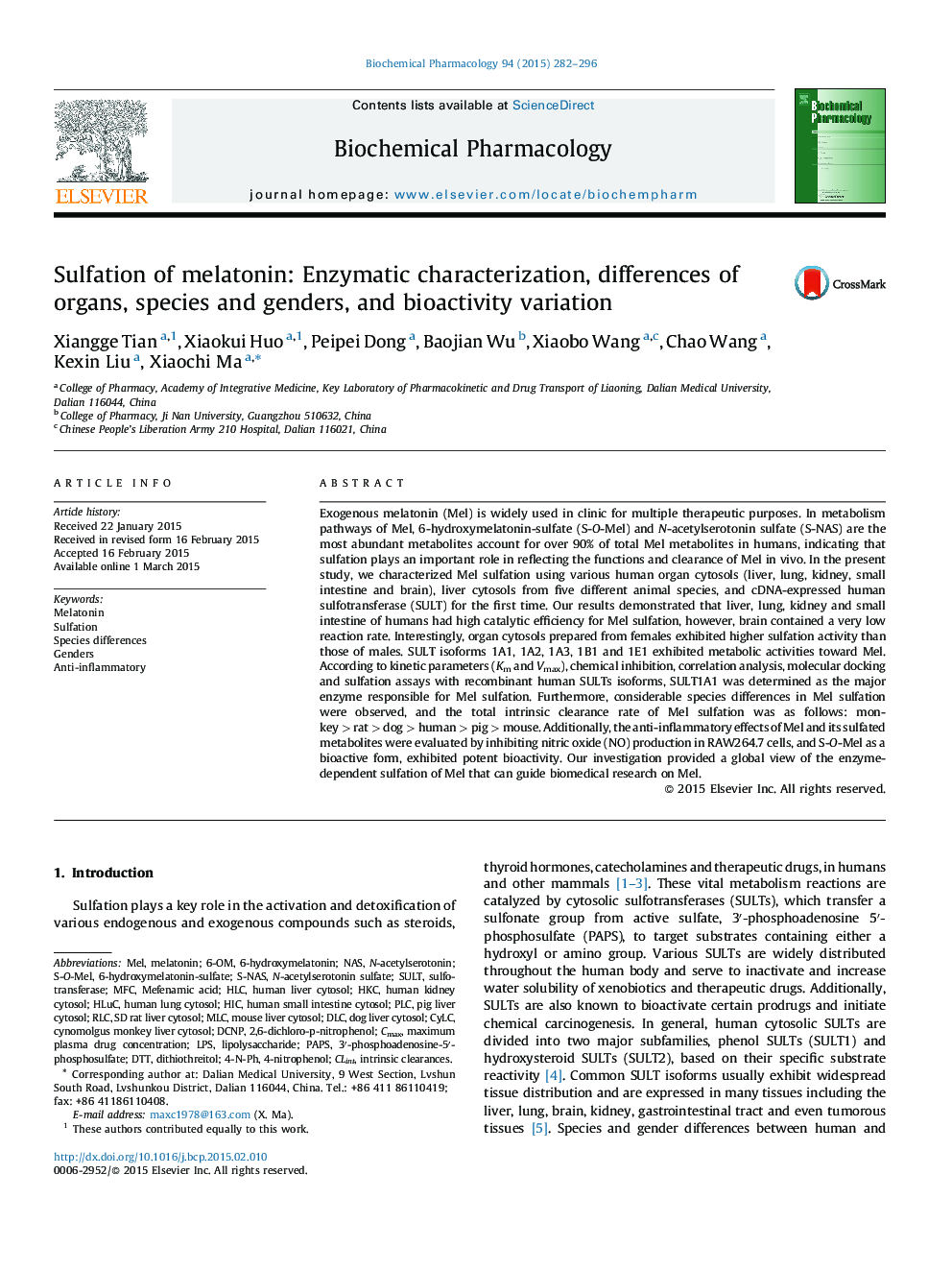| Article ID | Journal | Published Year | Pages | File Type |
|---|---|---|---|---|
| 2512070 | Biochemical Pharmacology | 2015 | 15 Pages |
Exogenous melatonin (Mel) is widely used in clinic for multiple therapeutic purposes. In metabolism pathways of Mel, 6-hydroxymelatonin-sulfate (S-O-Mel) and N-acetylserotonin sulfate (S-NAS) are the most abundant metabolites account for over 90% of total Mel metabolites in humans, indicating that sulfation plays an important role in reflecting the functions and clearance of Mel in vivo. In the present study, we characterized Mel sulfation using various human organ cytosols (liver, lung, kidney, small intestine and brain), liver cytosols from five different animal species, and cDNA-expressed human sulfotransferase (SULT) for the first time. Our results demonstrated that liver, lung, kidney and small intestine of humans had high catalytic efficiency for Mel sulfation, however, brain contained a very low reaction rate. Interestingly, organ cytosols prepared from females exhibited higher sulfation activity than those of males. SULT isoforms 1A1, 1A2, 1A3, 1B1 and 1E1 exhibited metabolic activities toward Mel. According to kinetic parameters (Km and Vmax), chemical inhibition, correlation analysis, molecular docking and sulfation assays with recombinant human SULTs isoforms, SULT1A1 was determined as the major enzyme responsible for Mel sulfation. Furthermore, considerable species differences in Mel sulfation were observed, and the total intrinsic clearance rate of Mel sulfation was as follows: monkey > rat > dog > human > pig > mouse. Additionally, the anti-inflammatory effects of Mel and its sulfated metabolites were evaluated by inhibiting nitric oxide (NO) production in RAW264.7 cells, and S-O-Mel as a bioactive form, exhibited potent bioactivity. Our investigation provided a global view of the enzyme-dependent sulfation of Mel that can guide biomedical research on Mel.
Graphical abstractFigure optionsDownload full-size imageDownload as PowerPoint slide
